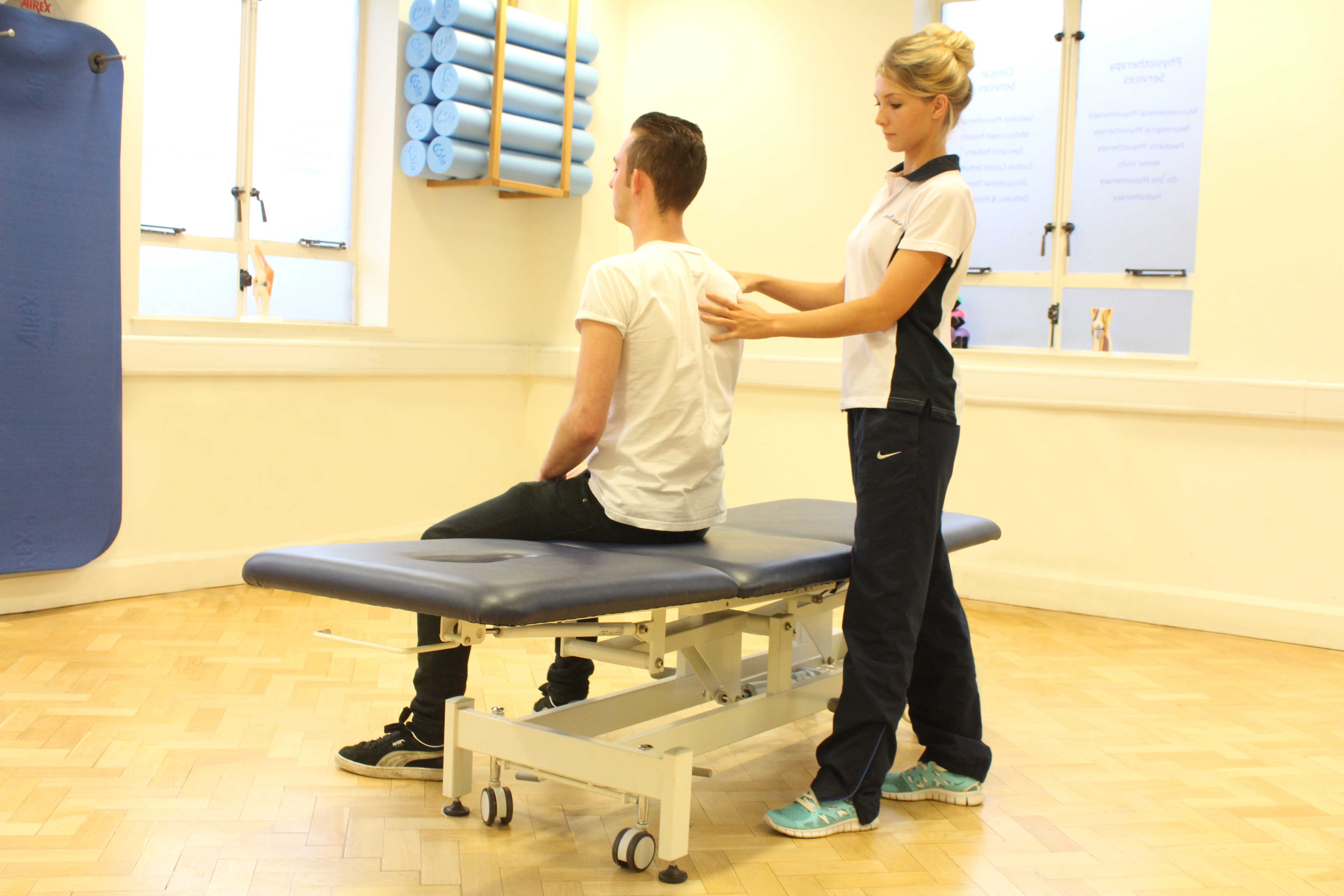What is nasopharyngeal suction?
Nasopharyngeal suction is a technique used by respiratory physiotherapists that involves using the airway of the nose to remove secretions (phlegm) from the upper airways when the patient is unable to do so themselves. This inability could be due to:
- lack of an effective cough
- large secretion volumes
- particularly thick secretions
- fatigue
- low level of consciousness
 Above: Active cycle of breathing exercises supervised by a specialist therapist
Above: Active cycle of breathing exercises supervised by a specialist therapistThe technique involves passing a suction catheter, down the nose’s airway until this stimulates a cough. This is an invasive procedure only used in circumstances where other techniques have been trialled and have failed. If repeated suction is required an artificial nasal airway will be inserted to help decrease discomfort.
Nasopharyngeal suction is often used in combination with manual chest physiotherapy techniques (such as vibrations), to optimise volume of secretions attained. Sometimes nasopharyngeal suction is used to get a secretion sample for analysis; however, suction is only used when:
- Secretions are known to be present
- Secretions are accessible by catheter
- Secretions are proving detrimental to patients respiratory function
- Secretions are causing the patient distress
- The patient is unable to clear the secretions independently by any other means
What are the benefits of nasopharyngeal suction?
Nasopharyngeal suction removes secretions in the airways allowing the patient to:
- Ventilate more effectively
- Reduce the risk of developing a chest infection
Who would benefit from nasopharyngeal suction?
Nasopharyngeal suction is only used in cases where respiratory function is significantly impeded and other secretion clearance techniques have failed. The technique is used in people unable to clear secretions themselves actively and effectively, perhaps due to:
- Fatigue
- Neurological condition
- Side effect of some medications
- Severe pain
- Low state of consciousness

 0330 088 7800
0330 088 7800


































